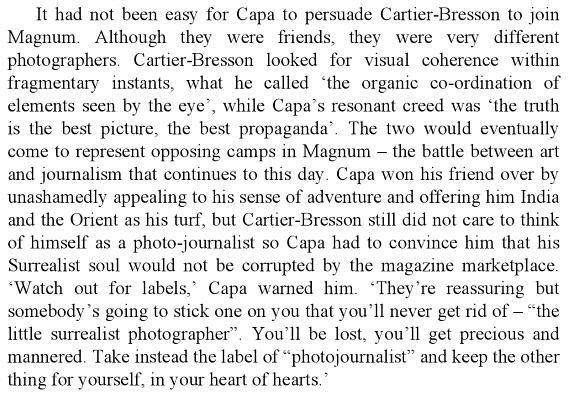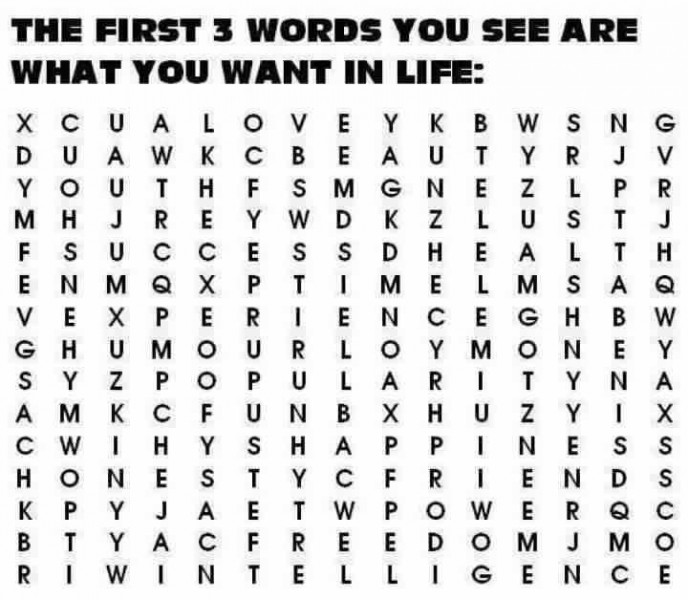
“Photography and the Art of Seeing” by Marcel Natkin, published in 1935.
Photography and the Art of Seeing
In case you don’t dwell in the world of photography and journalism, the recent World Press Photo (WPP) Awards have sparked quite a fierce debate over art and journalism photography, and the nature of truth in images. Yes, a debate as old as photography itself, but one that is raised year in and out after each annual WPP award. While I come from Art college, and personally do not have much interest in the debate, it is nonetheless interesting to read and digest views from both sides of the camp.
Press and Photo seem to be an odd couple. The press has been a tool of politics and propaganda as much as photography has. And ethics, held firm by tradition, is up against the advancement of photography, a technology-based practice that has deep implications on its industry, one I’ve heard many refer to as a sunset one, and the way people go about making a sustainable living.
In Jim Colton’s Open Letter To World Press, he questions the awarding of Sarker Protik’s image which ‘to MY eye looks nothing like reality’. That is inherently a flawed statement as stressed by his use of the Caps in ‘MY eye’. I’ve also read and heard many art photographers ridicule, in their eyes, the archaic view the photojournalism world have of photography. On the other hand, the art world’s Judas stance and skepticism of truth is neither respectful, nor healthy at best. I am sympathetic to both sentiments but aware of the identity crisis at play when it comes to an organisation like WPP.
Speaking of ‘identity crisis’, I am reminded of this excerpt conversation between Capa and Bresson from the book ‘Magnum: Fifty Years at the Front Line of History’ by Russell Miller. “Watch out for labels,” Capa warned him. “They’re reassuring but somebody’s going to stick one on you that you’ll never get rid of – “the little surrealist photographer”. You’ll be lost, you’ll get precious and mannered. Take instead the label of “photojournalist” and keep the other thing for yourself, in your heart of hearts.”

Excerpt from ‘Magnum: Fifty Years at the Front Line of History’ by Russell Miller.
Coincidently, I was browsing a relic of a book I bought last year from a rag book stall on the streets of Yangon, Myanmar called “Photography and the Art of Seeing” by Marcel Natkin, published in 1935. A quote on page 5 reads: “Photography and Reality: What is photography and what are its limits? The outer world is manifold. It contains everything, even art; but art overwhelmed by a flood of extraneous elements, from which it must be detached if it is to become perceptible. The function of the photographer is to disentangle, to isolate the scattered poetry which the living world hides. His apparatus equips him with the marvelous power of ‘crystallising’ whatever he wishes from the outer world, at the very moment when this fragment, incessantly moving before the lens, chances to attain its equilibrium.” Manifestly, what attracts our attention in the universe is a function of our interests, of our temperament, of our ideas and our culture. In essentials, photography is a choice which bears the stamp of our individuality.”

“Photography and the Art of Seeing” by Marcel Natkin, published in 1935.
As I penned down these thoughts this morning, the following crosswords grid popped up on my social media feeds. It suggested that the first three we saw are what we want out of life. One can draw comparisons – what we see is influenced by, or a choice as Marcel Natkin noted, of our own literacy, bias and experience.
If you wanted to know, the first three words I saw were Love, Experience and Power.

via Conscious Life News.
Share

Comments 5
That’s a film emulation.
It’s like trying to be skimo.
It falls in the same argumentation.
noted. thank you for answering george.
This is from a book also called “Photography and the art of seeing”, Freeman Patterson, Sierra Club Books, 1985:
“Good seeing doesn’t ensure good photographs, but good photographic expression is impossible without it”
I see HONEST…
About that debate, is “the” debate of photography.
…also LOVE and WIN
Good quote.
if there is anything that I picked up with this article, it’s that labels divide, just as eskimos would have multiple names for multiple kinds of snow. no wonder bruce lee told people to be formless as water, because once you’re pidgeonholed into something, it’s hard to break the mold. hahahaha. good read. :)
though i ask, does the use of film presets (e.g. VSCO) diminish the photojournalistic integrity of an image? what’s your take on this?